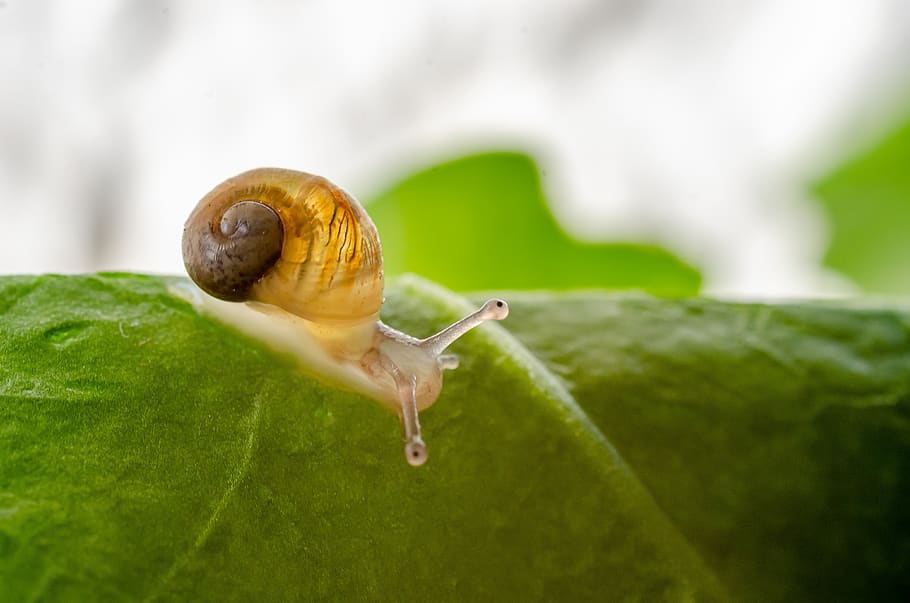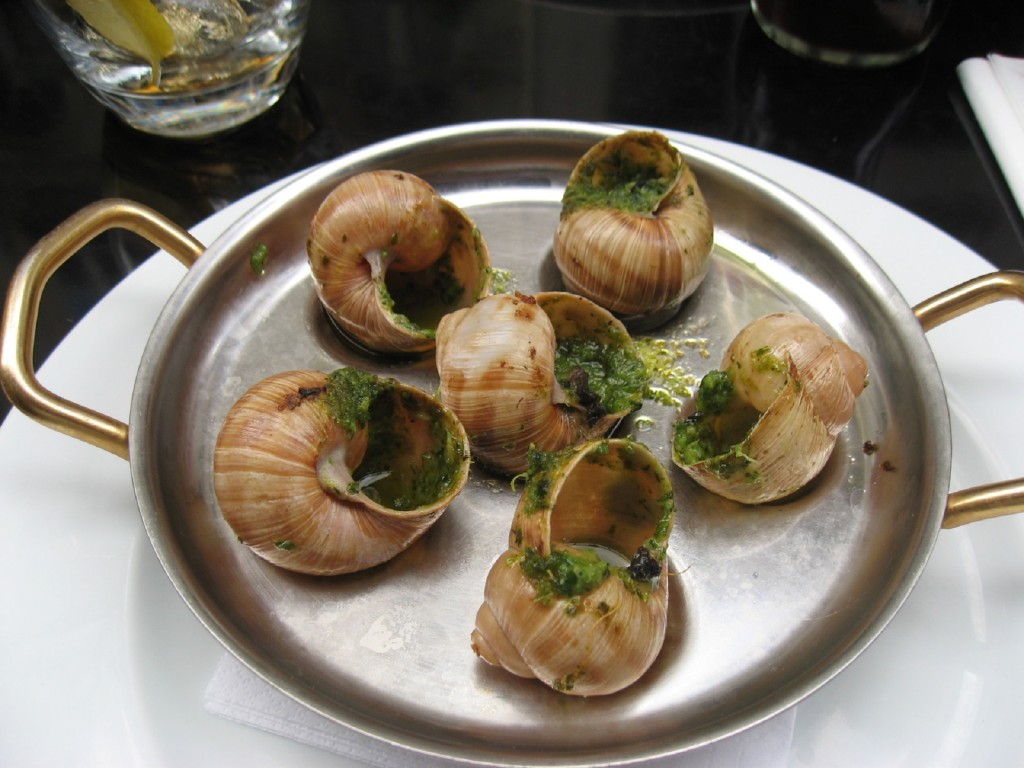
It might surprise you, but people consider snails a special treat to eat. Have you ever thought, “What do snails taste like?” Well, the answer might not be what you expect. Even though they don’t have a strong taste themselves, they absorb the flavors of the things used to cook them.
Although many believe they’re slimy, they’re more similar to soft and tender pieces of meat. Some people say they are like chicken whereas others think they have an earthy taste and chewy texture. But what is the truth? Let us explore this unique culinary journey together.
What Do Snails Taste Like?
Snails taste like a gentle mix of mild seafood and mushrooms with a natural earthy flavor.. While not everyone’s cup of tea, giving them a try offers a chance to savor their unique flavor and texture. If you’re curious about experiencing this delightful delicacy, allow us to provide you with a comprehensive insight into its taste.

Tender
Snails have a soft and meaty texture that’s similar to mussels or clams. The method and duration of cooking significantly impact this texture. Overcooking can make them hard, whereas undercooking can lead to softness.
The optimal temperature for cooking snails to achieve a tender texture is usually around 160 to 180°F (70 to 80°C). This temperature range allows the proteins in the snail meat to denature and set without becoming tough or rubbery. Cooking them gently within this range helps maintain their delicate texture and flavors.
Earthy and Inviting Aroma
Snails have a gentle and natural smell, a bit like mushrooms. The scent can also vary based on the ingredients used, like garlic, butter, parsley, and wine, which enhance the enticing aroma.
Season the snails with a light touch of salt and pepper. Proper seasoning can help bring out their inherent aromas without masking them.
Flavor
Snails bring a subtle and delicate flavor similar to fish or chicken. While they’re not bursting with taste on their own, they absorb flavors from what they’re cooked with. It means their flavor can range widely, from garlic and butter to herbs, spices, and more.
A balanced combination of ingredients helps enhance the natural aroma without overwhelming it. The goal is to create a harmonious blend of flavors that highlights the snails’ unique scent.
Note: The perception of snail taste varies widely across cultures. In some countries like France, Italy, and Spain, snails are considered a delicacy and are often prepared with garlic, parsley, and butter to highlight their unique taste.
Also Read: Top 7 All-You-Can-Eat Sushi in Las Vegas [2023 Guide]
Factors that Influence the Taste of Snails
Snail taste gets influenced by various factors such as species, diet, habitat, freshness, and preparation methods. Certain species have distinct flavors which are influenced by what they eat.
Diet Influence
The diet of a snail is a crucial factor that directly affects its taste. Snails are known to be opportunistic feeders, meaning they eat a wide variety of plants, fungi, and other organic matter in their environment. The compounds present in their diet get incorporated into their tissues and bodily fluids, impacting their flavor.

- Plants and Herbs: Snails that primarily feed on various plants and herbs might have a more herbaceous or grassy flavor. The specific plants they consume can also add unique aromas and tastes to their flesh.
- Fungi: Snails that consume fungi might have a richer and earthier flavor, as they can accumulate compounds from the fungi they eat.
- Fruits: Some snail species eat fruits, which could contribute a sweeter or more fruity note to their taste.
- Algae and Water Plants: Snails that feed on aquatic vegetation, algae, and water plants might have a milder and fresher taste with a hint of aquatic flavors.
Habitat and Environment
The environment in which snails live also influences their taste. Snails that inhabit different regions, climates, and ecosystems might have flavors that reflect the specific characteristics of their habitats.
For example, snails from coastal regions might have a subtle briny or marine flavor due to their proximity to the sea. Whether they reside in freshwater or saltwater, these environments affect their taste.
Many folks enjoy eating cooked snails, while others like them raw. It’s good to know that these two types taste different and unique. But, which one might you enjoy? Read on to find out.
How Do Cooked Snails Taste Like?
We suggest starting with cooked snails for a more delicious experience. Cooking snails gives you many choices to match what you like depending on how you cook them. Below, you’ll discover a comprehensive manual detailing the various flavors of cooked snails using different techniques.

Boiling
Boiling stands as a straightforward and widely practiced technique for preparing snails. Boiled snails provide a mild and earthy flavor just likemushrooms. They feel soft and satisfying when you bite into them.
The process involves removing the membrane covering the shell opening, rinsing thoroughly, and then placing the snails in a pot of water seasoned with salt and vinegar. Boil them for approximately 20 to 30 minutes until they turn tender and can be easily extracted from the shell.
Frying
Frying presents another favored method for cooking snails, especially in African and Asian cuisines. Fried snails have a more robust flavor compared to boiled ones by absorbing the oil and spices. Their texture provides a pleasant contrast – crispy on the outside with a chewy interior.
Start by boiling the snails as (previously described) followed by draining and patting them dry. Heat oil in a pan, and fry the snails for 10 minutes until they attain a golden, crispy exterior. Customize with salt, pepper, or your preferred spices.
Handy Tip: Fried snails serve as flavorful options for snacks or appetizers and pair nicely with rice, noodles, or bread.
Grilling
Grilling is a method that lends snails a smoky taste and a crispy outer layer. Grilled snails boast a rich and savory flavor enhanced by smokiness and char. They’re firm and juicy which offers a slightly chewy texture.
To grill snails, you first need to remove them from the shell by boiling method and skewer them on sticks. Brush them with oil or butter and grill over high heat for around 5 minutes per side until they turn brown and sizzle. Adding a sprinkle of salt, pepper, herbs, or cheese is also an option. Enjoy them as a main dish, side, or dipped in sauce.
Baking
Another approach is baking which renders snails tender and moist. Baked snails delight with a creamy, cheesy taste heightened by garlic and wine. They’re soft and succulent with a melt-in-your-mouth texture.
After boiling, place the snails in a baking dish, and cover them with butter, garlic, cheese, cream, wine, or your preferred sauce. Bake in a preheated oven for 15 to 20 minutes until they bubble and acquire a golden hue. You can enjoy them as a main dish, side dish, or with bread to fully relish the delicious sauce.
Can You Eat a Raw Snail? What Do Raw Snails Taste Like
Lots of people enjoy snails without cooking them as they’re a bit chewy and a little sweet. However, you must have to be careful before eating. Make sure the snails are clean and safe to eat because bad things like bacteria can make you sick.

Experiencing raw snails is not recommended, but if you want to try we have some suggestions that you can do to make raw snails taste better. Follow this step-by-step process.
- Get fresh and living snails that are safe to eat. You can buy them from a good place or gather them from a clean area where there are no harmful chemicals.
- Keep the snails in water with salt, vinegar, or lemon juice for three days before eating them. Change the water every day. This helps clean out their insides. You can also give them lettuce, apple, or grape leaves to make them taste better.
- Clean the snails well underwater. Use a brush or cloth to scrub their shells and remove dirt. Rinse them and let the water drain.
- Take off the thin layer covering the shell’s opening. You can use scissors or a knife to do this. Then you’ll see the snail’s body inside the shell.
- Get the snail out of the shell. You can use your fingers, a toothpick, or a skewer. Further, you may need to wiggle it a bit to detach it from the shell. Then, discard the empty shell and move on to the next step.
- Trim off the parts you don’t want to eat. It includes the head, foot, intestines, and other organs that may look unappealing. You should end up with a small piece of white or pink meat, which is the edible part of the snail.
- Wash the snail meat in water. It will help remove any dirt or slime that may be on it. You can also soak it in salt water for a few minutes to kill any bacteria or parasites that may be present.
- Season the snail meat to your liking. You can add salt, pepper, lemon juice, vinegar, or herbs to enhance the flavor. Additionally, you can dip it in sauce like garlic butter, soy sauce, or hot sauce for an extra taste. Chew it well and savor the mild and nutty flavor of the raw snail.
Enjoy your snail!
Editor’s Pick: 10 Scrumptious Sushi Restaurants in Dubai You Shouldn’t Miss
Common Mistakes in Enhancing Snail Taste
Enhancing the taste of snails can be a delightful culinary adventure. However, it’s crucial to navigate this process with care. Let’s have a look few common mistakes that people do:
- Choosing Unsafe Snails: Picking snails from an unsafe source or environment without knowing if they are clean and edible can lead to health risks. Always ensure that the snails are safe to eat and free from contamination.
- Skipping the Purging Process: Not purging the snails properly before eating them. Purging involves keeping the snails in water with salt, vinegar, or lemon juice for a few days to remove impurities. Skipping this step can result in a less enjoyable taste.
- Neglecting Cleaning: Failing to thoroughly clean the snails, including their shells, can leave dirt, debris, and slime, affecting the overall taste and texture.
- Overcooking or Undercooking: When cooking the snails, overcooking or undercooking them can lead to a rubbery or tough texture, diminishing the desired taste experience.
- Improper Seasoning: Adding too much or too little seasoning can overpower or underwhelm the snail’s natural flavor. It’s important to strike the right balance to complement the taste.
- Using Strong Flavors: Overpowering the snail’s delicate flavor with strong herbs or sauces can mask its unique taste rather than enhance it.
- Not Removing Undesirable Parts: Leaving the inedible parts of the snail behind, like the head, foot, intestines, and reproductive organs, can lead to an unsavory taste and texture.
- Inadequate Soaking: Skipping the step of soaking the snail meat in salt water briefly to get rid of bitterness might result in a less enjoyable flavor.
- Not Chewing Properly: Not chewing the snail meat thoroughly can affect your ability to fully appreciate its mild and nutty taste.
- Skipping Fresh Ingredients: Avoiding fresh ingredients like lettuce, apple, or grape leaves during the purging process can miss an opportunity to enhance the snail’s flavor.
Conclusion
We have covered everything there is to know about what snails taste like and how you can enhance the taste of a snail before eating. Be mindful of the facts that we mentioned and you’ll be savoring this unique dish in ways you’ve never imagined! If you found some other tips, be sure to leave a comment below!
What do Snails Taste Like? - FAQs
Snails carry hints of wild herbs, gentle umami, and a whisper of the sea, all wrapped in a tender texture that’s a cross between buttery and springy.
No, different snail species can taste quite distinct due to their genetics, diet, and habitat.
Yes, cooking methods matter. Properly cooked, snails turn tender with a texture resembling well-cooked seafood, and flavors are enhanced by seasonings and sauces.
Think of snail taste as a mix between tender seafood and mild mushrooms, with subtle herbaceous undertones.
 Reviewed by
Reviewed by ![What To Wear To a Drag Show? [HOTTEST Outfit Ideas]](https://hopdes.com/wp-content/uploads/2024/01/What-to-wear-to-a-Drag-Show-390x220.jpg)



![What to Wear to an Outdoor Concert? [Cute Outfit Ideas]](https://hopdes.com/wp-content/uploads/2023/11/What-to-Wear-to-an-Outdoor-Concert-Cute-Outfit-Ideas-390x220.jpg)
